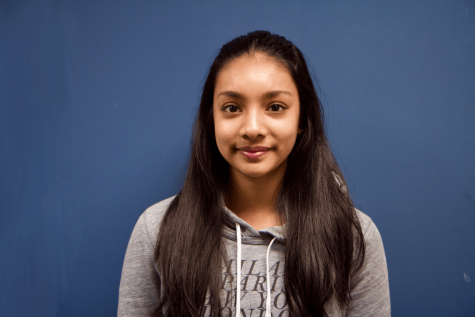Diversifying the dance industry
December 14, 2018
I can’t tell you how many times I have been at dance class with my friends, laughing, talking and having a good time, but feeling like something was off. Not because my friends weren’t interacting with me or my apprehension about my dancing abilities, but because I would glance in the mirror and feel so blatantly out of place. I have participated in Chinese dance for nine years as someone of both Chinese and Indian heritage. But still not a day in the studio goes by when I do not feel like my darker skin is pronounced, not only through the reflections of full-length mirrors, but by the costumes, shoes and tights that never seem to blend in with my skin as they do with that of my peers. Standing in garments that appear nearly white against my skin, I wonder if an industry that will not even cater to my demographic in costume could ever see me as equal to my more fair-skinned counterparts.
The lack of diversity in dance, most notably in ballet, continues to be a pressing issue. One company that recently addressed this is Ballet Black, a professional ballet company for dancers of African or Asian descent, which collaborated with dance shoe manufacturer Freed of London to create pointe shoes in bronze and brown for dancers of color. For many, this news came as a huge relief to no longer have to sponge their shoes with foundation in order to have pointe shoes match their skin tone.
The predicament many dancers of color face translates to my own experiences. The costumes my dance studio orders are custom-made from China, where the range of colors is far more limited. When ordering group costumes that included “nude” colored material, my studio often settled for fabrics that were distinctly different from my skin tone, as they matched my teammates flawlessly. Needless to say, each time we rehearsed dances in such costumes or performed on stage, I felt glaringly exposed. When I performed a solo dance last year in a flesh-colored leotard, I had to test out several different fabrics to determine which hue would be most appropriate for my skin. I was ultimately forced to accept one with gray undertones, as none of the samples were dark enough to accommodate my skin tone. With group dances, the clashing fabric could be justified by its suitability on the other dancers, but even for my solo, I had no choice but to wear a costume that did not match my skin tone.
The issue isn’t really about how well a costume matches different skin tones, but the message conveyed. When dancers don’t see their profile represented in costumes, it sends the message that their race is inappropriate for a dance style exclusive to dancers who fit the existing color range. The deterrence is cyclical: when dancers feel underrepresented in a particular style, they are less likely to participate. Consequently, dancers of certain racial backgrounds become the minority.
My humiliation in being the “darker” kid in my studio and the accompanying subtle degradation has pushed me close to quitting on numerous occasions. When I constantly encountered “nude” fabrics that were lighter than me by several shades, it became increasingly challenging to feel accepted. Such experiences can be difficult to overlook, but with the work of companies like Ballet Black, I am optimistic that dance will continue to become more representative of a more diverse generation of dancers.
Costumes should never be an obstruction to pursuing a passion, but in the dance world, ballet in particular, it is all too common for dancers of color to be excluded or discouraged from serious commitment to the craft. While the industry should make greater efforts to include dancers of color, introducing varied color ranges is a stepping stone to allowing dancers of all racial backgrounds to feel welcome in a visual art that has long been entrenched in Eurocentric beauty ideals.



































































